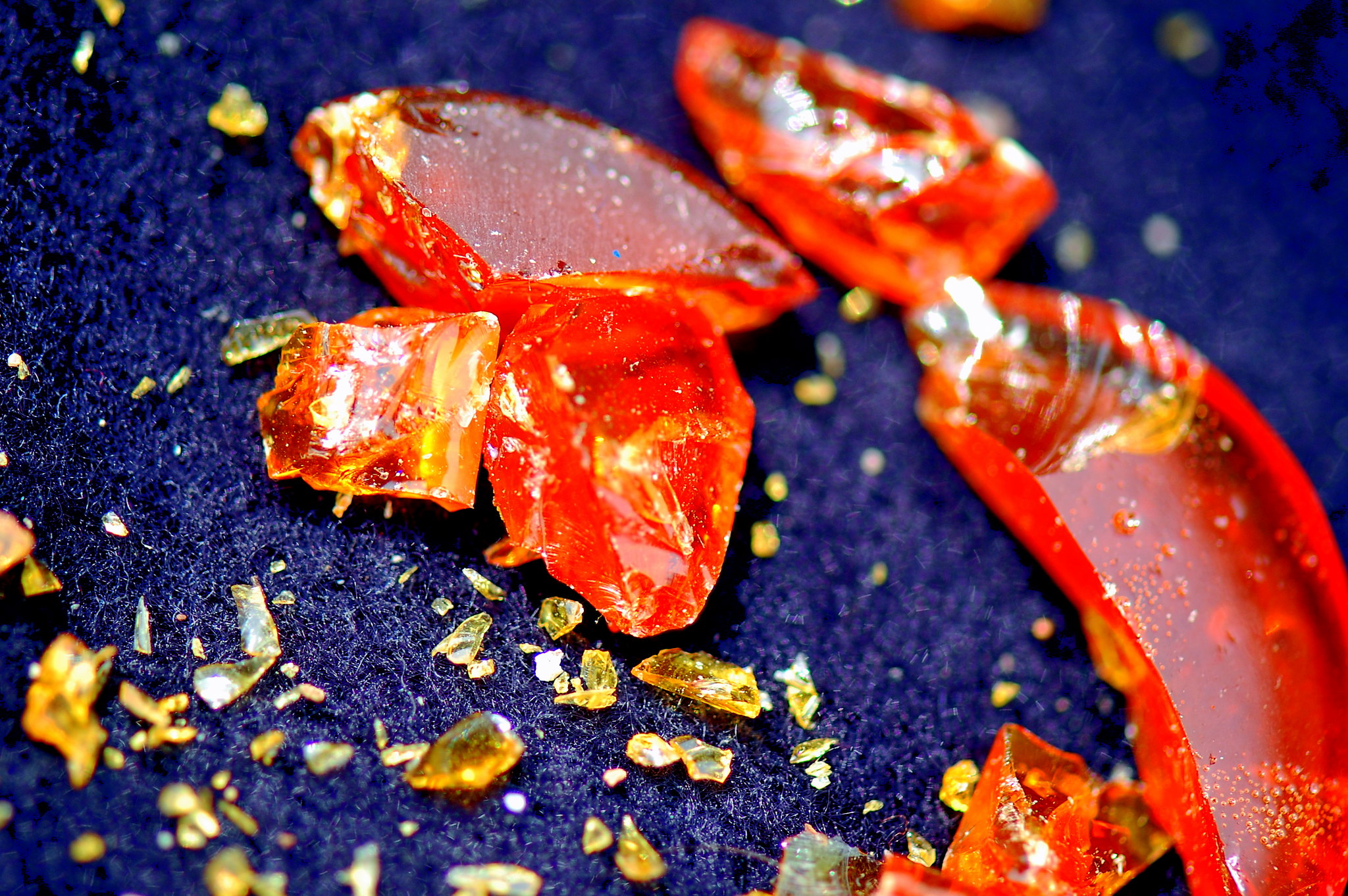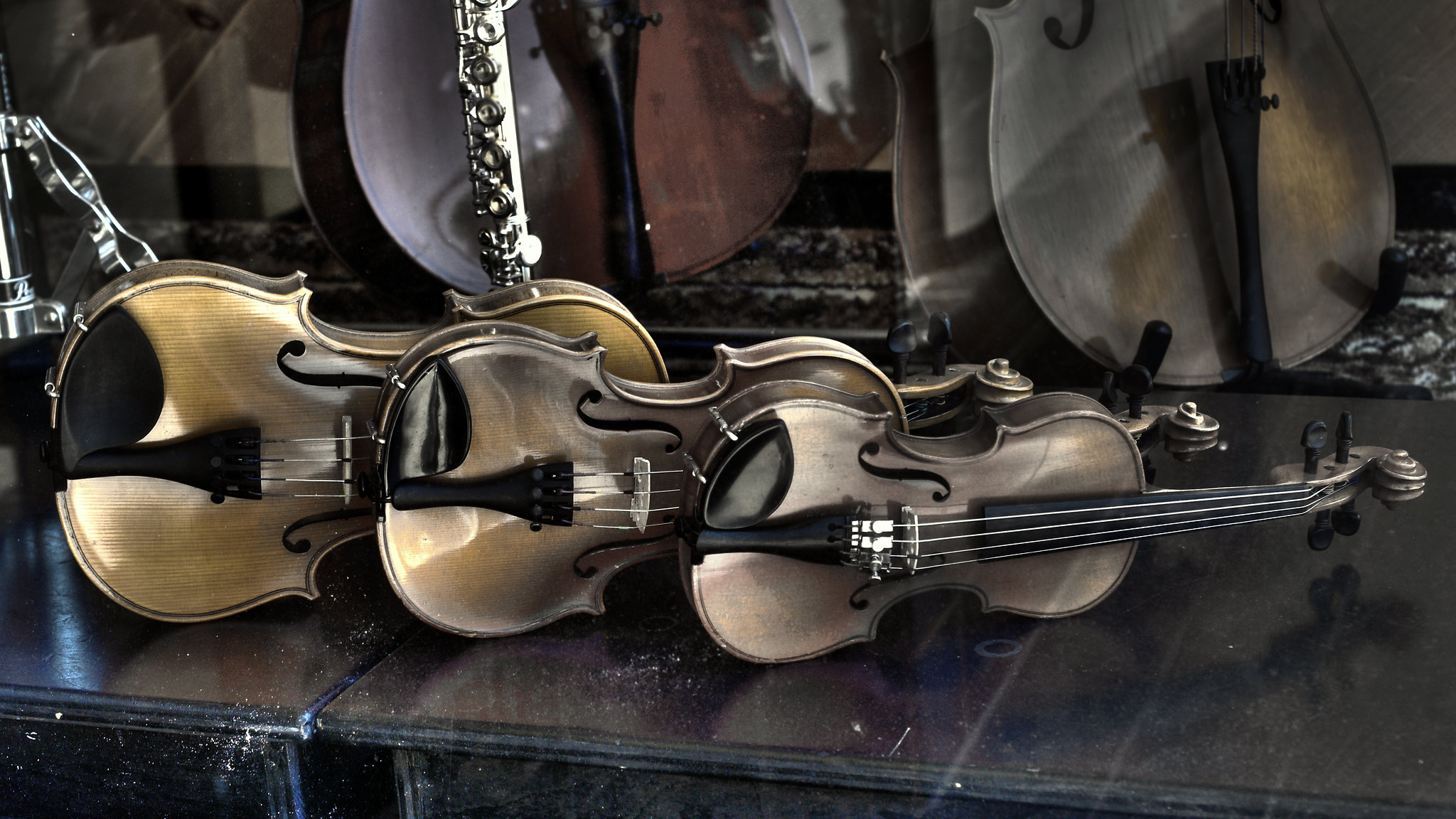The nut of the violin is an integral part of the violin's structure. It is an often forgotten piece of the puzzle of why violins sound the way they do. Here's what you need to know about the violin nut.
Materials
A violin is not a large instrument. The pieces of a violin are even smaller! Luthiers are trained stringed instrument doctors and they must have very steady and careful hands, not unlike a surgeon! The nut is just a tiny little piece of ebony wood that sits at the very top of the fingerboard, next to the pegbox.

In this picture, the nut is the small strip of white, right after the black fingerboard. Some luthiers and DIY'ers choose a different material than ebony, but all of the materials you'll see for sale are going to be an extremely strong and durable as the violin nut takes a lot of pressure and abuse by the strings. Some people are convinced that aged ebony makes the nut even stronger and more durable!
Some DIY'ers use other pieces of violin lutherie materials to make a violin nut from scratch. Some have used a table or circular saw to cut down a piece of ebony themselves while others prefer to purchase the $1.50 piece of wood and shape it themselves with chisels, files, and blades. Others prefer to get a semi-fitted nut and hand the violin and wood to the luthier for shaping and finishing. Like many parts of the violin, the nut requires shaping, sanding, and precise measurement.
Size
The generally accepted measurements for a full-size violin nut is 0.4mm from the fingerboard to the top of the nut for the g string and 0.3mm from the fingerboard to the top of the nut for the e string. The nut is then carved to include grooves, not unlike the bridge, to guide the strings into the pegbox. These grooves are carefully carved to accommodate the larger diameter of the g string and the smaller diameter of the e string. The grooves are opened up toward the pegbox to allow the string no impediment happens.
Attaching to the Violin
Lastly, unlike a bridge, which is free-standing and should not be glued to the face of the violin for fear of damaging the varnish, violin nuts are glued to the fingerboard with hide glue. It should only be glued to the side of the nut that is directly attached to the fingerboard.
Some craftspeople swear by carving the nut before gluing it to the fingerboard. Some artisans insist one should glue and then carve carefully. There are many videos, guides, and step-by-steps for people who care to try their hand at violin woodworking!
Summary
Remember, this woodwork is highly sophisticated and if you do not feel comfortable with carving a nut or making grooves in wood, please see someone who is. People who are trained in this craft have no problem quickly installing a violin nut with little to no complications. The violin nut is a tiny piece of the violin, but it's integral to the instrument's sound and playability. Made or installed incorrectly, and your instrument will not come to life.




